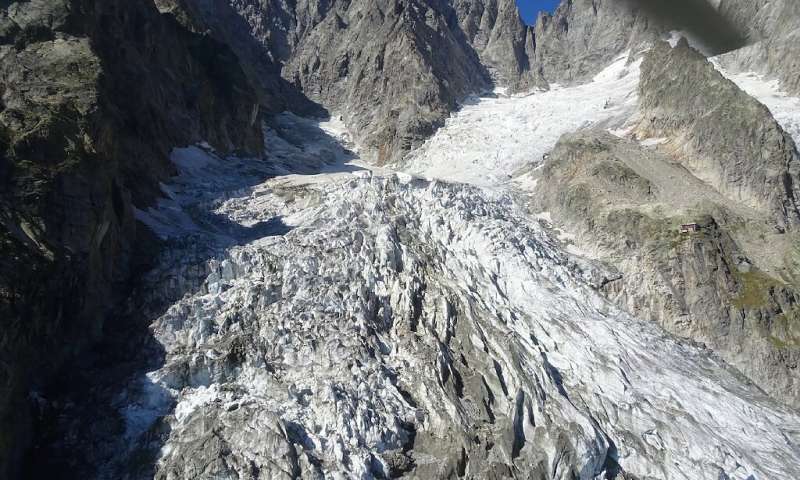ROME: Part of a massive glacier on the Italian side of the Mont Blanc mountain range is close to collapse after accelerated melting in the late summer heat, officials at a nearby town warned Wednesday.
This is the latest of a series of warnings about melting glaciers — in the Alps and elsewhere — as concern grows about the effects of climate change.
The mayor of the town of Courmayeur has ordered a local access road closed at night and limited access to the region below the glacier, which is popular with tourists, a town spokesman told AFP.
Town spokesman Moreno Vignolini dismissed “apocalyptic” reports in the media that it was threatening to smash down on the town itself. Below the glacier, he said, “there are no homes, only a few unoccupied chalets”.
Part of the Planpincieux glacier in the Aosta Valley is in danger of crashing into a valley running parallel to the Courmayeur valley, said Vignolini. “With the strong heat this summer, there has been between August and the first half of September, an acceleration of the melting of the glacier, at an average rate of 35 centimetres (14 inches) a day, up to highs of 50-60 centimetres on some days,”
The chunk of the glacier concerned, which makes up between a fifth and a sixth of the total and weighs around 250,000 tonnes, was threatening to break away and crash down into the valley, he added.
“There is a problem with a part of the Planpincieux glacier located at Val Ferret, which is thought to be falling due to a large fracture between the, say, stable part of the glacier and this part,” the mayor of Courmayeur, Stefano Miserocchi, told AFP.
Late on Tuesday Miserocchi ordered the night-time closure of the access road to Val Ferret, on the Italian side of Mont Blanc.
He has banned walkers from the area below the glacier, which is popular with visitors and has three mountain refuges. Experts at the Fondazione Montagna Sicura (Safe Mountain Foundation), who have been monitoring the glacier for the Val d’Aosta region since 2013, alerted local officials to the latest developments.
“This glacier is atypical because it’s temperate, and so is influenced by the temperature of the water flowing below, which particularly exposes it to the global warming in progress,” said the foundation’s secretary-general Jean Pierre Fosson.
But he cautioned against alarmism, stressing that the preventive measures taken so far were for an “unprecedented situation” for a glacier in the region.
While it might break off in a single block, it could just crumble away or not break away at all, he added.
The Foundation monitors 180 glaciers in the Val d’Aosta region and this kind of thing is unavoidable, said Fosson. “Every year we see two square kilometres (0.8 square miles) of ice disappear” he said. “And it is getting worse with the increasingly hot summers and autumns.”
According to a landmark assessment approved by the 195-nation Intergovernmental Panel on Climate Change (IPCC), accelerating melt-off from glaciers and Earth’s ice sheets atop Greenland and Antarctica are driving sea level rise. Since 2005, the ocean has risen 2.5 times faster than during the 20th century, threatening island nations and coastal cities. The rate at which the waterline rises will quadruple again by 2100 if carbon emissions continue unabated, the report found. On Sunday, dozens of people dressed in black attended a symbolic funeral march on a Swiss mountainside to mark the disappearance of an Alpine glacier on Pizol mountain. A study by Swiss researchers released earlier this month suggested that the Aletsch glacier — the largest in the Alps — could disappear completely by the end of the century if nothing was done to rein in climate change.



